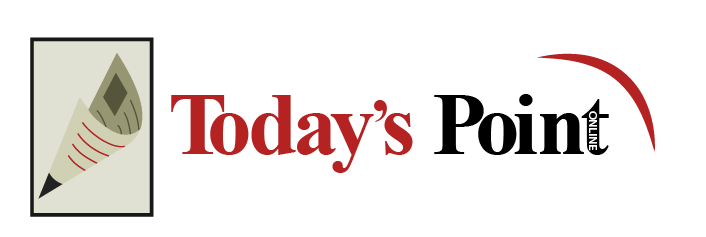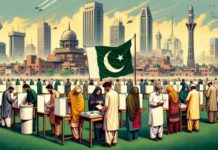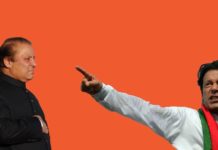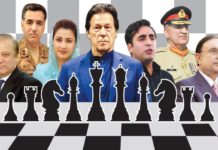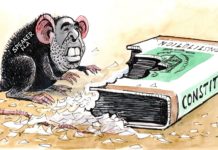A democratic approach would have been to fully respect the PPP’s right to complete its constitutionally mandated tenure and siding with the PPP every time it is subjected to subversive campaigns; and at the same time, criticising the PPP government for its gross inefficiencies albeit without reducing it to the person of President Zardari. Focus on persons has occluded debate on the structural constraints holding Pakistan back. For instance, the foreign debt has become the biggest hurdle in any meaningful reform within the system. And it is no chance occurrence that it is not our elected governments but military dictatorships that accumulated the foreign debt and mortgaged our future to foreign donors.
When Gen Pervez Musharraf was finally humbled, for instance, Pakistan was paying Rs250 billion annually on debt servicing. With this amount Pakistan can build 250,000 new three-room houses in the flood-hit area, recruit 12.5 million nurses, and establish 27, 778 primary schools with 200,000 teachers employed.
The country’s external debt was $45 billion in June 2008, compared to $33.352 billion in 1999. This despite the fact that the Musharraf dictatorship received $15 billion in US aid besides the $25 billion coming through remittances from overseas Pakistanis. Had the Musharraf regime stopped borrowing, the Pakistani chapter of Campaign for the Abolition of Third World Debt (CADTM) believes, Pakistan’s debt would have declined to $23.646 billion after the payment of the principal amount by end-2007.
It also is no incident that the International Monetary Fund, the World Bank and the Gulf states become lavish when a dictator is at the helm of Pakistan. Pakistan joined the IMF in 1950 and for the first time begged for an IMF loan in 1958 just ahead of the first military coup. It was a Stand-By Agreement (SBA) worth $25 million. The IMF’s financial czars rejected the Pakistani plea. Under the Ayub dictatorship, however, the IMF granted two SBAs: one in 1965, the other in 1968. His successor, Gen Yahya Khan, was blessed with four more SBAs. The Yahya dictatorship was granted $330 million in loans.
While the first PPP government headed by Zulfikar Ali Bhutto was given a cold shoulder and an enraged Bhutto told the IMF “Go to hell, we do not want your money,†the Fund enthusiastically embraced the Zia dictatorship. In November 1980 alone, the Fund extended the huge amount of $1.27 billion to the Zia dictatorship through the long-term Extended Fund Facility (EFF). The amount was three times the entire amount ($460 million) lent through seven SBAs in the preceding 20 years (1958-79).
When Pakistan returned to a moth-eaten democracy (1988-99), the IMF became more demanding, while Uncle Sam began to worry about Pakistan’s nuclear programme. The IMF, like its Siamese twin the World Bank, operates through the UN. However, when it comes to decision-making, Washington rules the roost, since it commands 17 percent of the deciding votes. Understandably, when the Pressler Amendment was applied on Pakistan, the number of conditions attached to the structural adjustment loan granted to the then PPP government (1988-91) increased from 27 in 1985 to 56 in 1989. The conditions attached to the 1988 IMF package were the harshest in the history of IMF-Pakistan dealings.
During Benazir Bhutto’s second tenure (1993-96), the IMF suspended the Extended Structural Adjustment Facility (ESAF) and the Extended Fund Facility (EFF) after differences with her government over reduction in tariff rates. Finally, the third PPP government capitulated to accept all stringent conditions in order to get a package worth $1.2 billion in 1995.
The heavy-mandate, second Sharif government (1997-99) also obediently obeyed the IMF commands. Over 66 industrial units were privatised during Nawaz Sharif’s second tenure. But with Gen Musharraf’s arrival, followed by 9/11, the IMF softened up. As a reward for his joining the “War on Terror,†the IMF began to extend financial support under the Poverty Reduction and Growth Facility (PRGF). Today, Pakistan spends three times as much on debt-servicing as on healthcare, in a country where 38 percent of children are underweight.
Regrettably, much of the media and mainstream political parties rarely engage in a debate on Pakistan’s debt crisis, either out of ignorance or ideology. Liberals in general consider foreign loans a blessing. The mullahs can’t think beyond conspiracy theories. In the meantime, by 2014, the country’s debt is expected to reach $75 billion
© Today's Point Online
